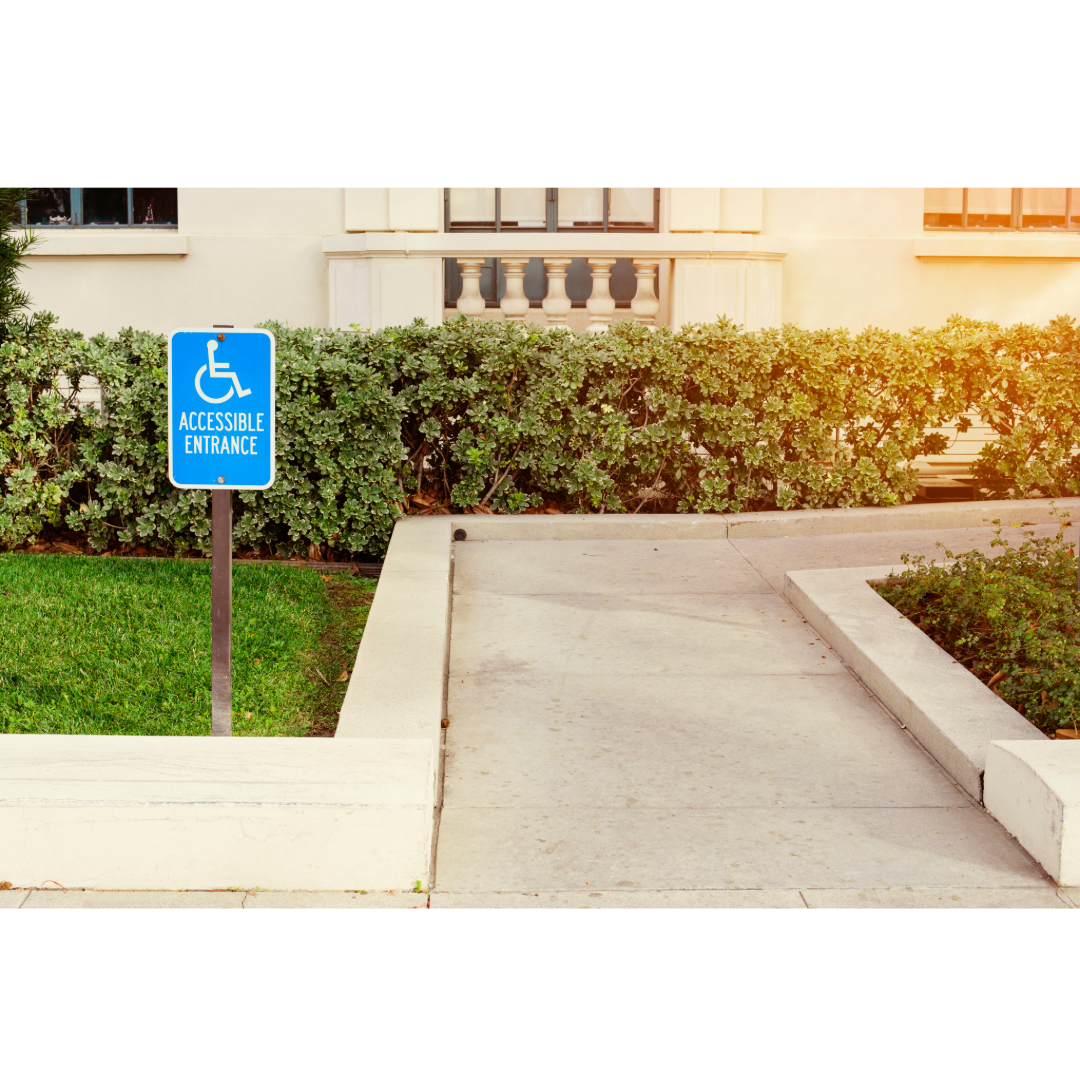ADA Compliance in Commercial Office Design: Key Areas for Creating Inclusive Workspaces
Creating an accessible office environment is essential for fostering inclusivity, and complying with the Americans with Disabilities Act (ADA) plays a crucial role in this effort. For businesses and corporate interior designers, focusing on key areas like accessible entrances, pathways, restrooms, workstations, and general office design is critical.
Let’s explore these essential ADA requirements and how they impact commercial office design, particularly for corporate interior designers in Chicagoland.
Accessible Entrances
Ensuring that building entrances are accessible is one of the most critical aspects of ADA compliance. This includes having at least one entrance that is wheelchair-accessible, which may require the installation of ramps or automatic doors. Doorways must have a minimum width of 32 inches to allow smooth access for wheelchair users.
This could mean retrofitting an entryway or modifying door handles to be accessible for individuals with limited mobility.
Pathways and Hallways
ADA guidelines require that office pathways and hallways are wide enough to accommodate individuals using mobility aids. The minimum width for accessible pathways is 36 inches, allowing for wheelchair maneuverability. Additionally, ensuring that hallways remain free of obstacles, such as furniture or storage items, is vital to maintaining accessibility throughout the office.
Corporate interior designers should take care to design spaces that allow smooth and unobstructed movement, helping employees and visitors navigate the office with ease.
Accessible Restrooms
Restrooms in commercial offices must include accessible features that ensure comfort and ease of use for individuals with disabilities. An ADA-compliant restroom should have:
Grab bars to assist with mobility,
Accessible sinks that are easy to reach from a seated position,
Adequate turning space to allow individuals using wheelchairs to maneuver within the restroom.
Providing at least one fully accessible restroom is necessary for compliance, and ensuring these facilities are clearly marked for easy identification is equally important.
Workstation Accessibility
Incorporating accessible workstations into office design is crucial for fostering a truly inclusive environment. ADA guidelines suggest that workstations should be adaptable to accommodate employees who use wheelchairs or other mobility aids. This includes features such as:
Adjustable desk heights to suit the needs of each individual,
Reachable equipment and controls from a seated position, ensuring that all employees can access necessary tools and technology.
Creating flexible, customizable workspaces that can be adjusted as needed will benefit not only employees with disabilities but also promote ergonomic solutions for all.
Learn More About the Americans with Disabilities Act (ADA)
To gain a deeper understanding of the Americans with Disabilities Act (ADA) of 1990 and how it shapes accessible design in the workplace, visit the official ADA website. This resource provides comprehensive information about the law, its guidelines, and specific requirements for businesses and public spaces to ensure accessibility for all individuals.
By staying informed about ADA standards, businesses can ensure compliance while fostering a more inclusive and welcoming environment for employees and visitors alike.
Building Inclusive Workspaces
Incorporating ADA requirements into commercial office design isn’t just about meeting legal obligations—it’s about creating a workspace that supports and includes everyone. Accessible entrances, pathways, restrooms, and workstations ensure that individuals with disabilities can fully participate in the workplace. Rieke Interiors specializes in building custom furniture that fits ADA requirements, making it easy for you to get started today.
For businesses in Chicagoland and beyond, working with experienced corporate interior designers who understand ADA compliance can transform your office into a more inclusive and accessible environment. Creating these types of spaces not only aligns with ADA guidelines but also builds a workplace culture where everyone can thrive.






